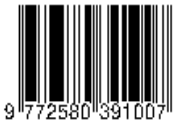ANALISA KUALITAS AIR DAN KOMPOSISI FITOPLANKTON PADA TAMBAK BUDIDAYA UDANG VANNAMEI DI KABUPATEN TUBAN
Keywords:
Budidaya Litopenaeus Vannamei, Kualitas Air, Komposisi FitoplanktonAbstract
Penelitian ini dilakukan untuk memahami hubungan antara kualitas air dan komunitas fitoplankton di 9 lokasi budidaya tambak udang vannamei, di Kabupaten Tuban. Parameter air di setiap lokasi pengambilan sampel diukur pada bulan Maret-Juni 2019 yang terdiri suhu, pH, oksigen terlarut, salinitas, amonia, natrit, nitrit, total nitrogen, total fosfat, dan COD. Kualitas air untuk kegiatan budidaya memenuhi atau melampaui standar kualitas air untuk kegiatan budidaya perikanan. Total nitrogen, fosfat, dan COD. Masalah faktor utama yang melebihi standar. Hasil kualitas air menunjukkan bahwa total fosfor (0,74), nitrogen total (0,72), ammonia (0,41) dan nitrat (0,70) merupakan faktor pertama, sedangkan komponen kedua adalah pH tinggi (0,78), oksigen terlarut (0,70) dan nitrit (-0,72). Sebanyak 35 genus fitoplankton diisolasi dan didentifikasi, dengan kelimpahan fitoplankton tertinggi (1092,5 × 105 ind/lt) dan biomassa (15,49 mg/lt). Kelimpahan fitoplankton terbanyak Merismopedia sp dan, Microcystis sp. Nilai indeks diversitas Margalef mengklasifikasikan kualitas air dalam tercemar ringan tercemar ringan atau sedang. Indeks kemerataan jenis-Pielou (0,55-0,85) dan indeks keanekaragaman Shannon-Wiener (1.83–2.51) juga menunjukkan polusi yang sedikit atau sedang. Hasil CCA mengungkapkan bahwa COD diikuti oleh total nitrogen, fosfor total, amonia, suhu, salinitas, pH, oksigen terlarut, nitrat dan nitrit menunjukkan hubungan yang erat dengan spesies dominan. Secara khusus, sebagian besar spesies dalam penelitian ini menunjukkan korelasi yang signifikan dengan suhu, pH, dan oksigen terlarut. Sementara COD dan amonia didistribusikan pada arah yang berlawanan. Fitoplankton seperti Merismopedia sp, Schroederia sp dan Closterium sp menunjukkan hubungan positif dengan total nitrogen dan total fosfor.
References
[2] Carbajal-Hernández, J.J., Sánchez-Fernández, L.P., Villa-Vargas, L.A., Carrasco-Ochoa, J.A., Martínez-Trinidad, J.F., 2013. Water quality assessment in shrimp culture using an analytical hierarchical process. Ecol. Indic. 29 (6), 148–158
[3] Kumar, V.S., Pandey, P.K., Anand, T., Bhuvaneswari, R., Kumar, S., 2017. Effect of periphyton (aquamat) on water quality, nitrogen budget, microbial ecology, and growth parameters of Litopenaeusvannamei in a semi-intensive culture system. Aquaculture 479, 240–249.
[4] Ge, H., Li, J., Chang, Z., Chen, P., Shen, M., Zhao, F., 2016. Effect of microalgae with semicontinuous harvesting on water quality and zootechnical performance of white shrimp reared in the zero water exchange system. Aquacult. Eng. 72–73, 70–76.
[5] Lemonnier, H., Lantoine, F., Courties, C., Guillebault, D., Nézan, E., Chomérat, N.,Laugier, T., 2016. Dynamics of phytoplankton communities in eutrophying tropical shrimp ponds affected by vibriosis. Mar. Pollut. Bull. 110 (1), 449–459.
[6] Ferreira, M.G.P., Melo, F.P., Lima, J.P.V., Andrade, H.A., Severi, W., Correia, E.S., 2017.Bioremediation and biocontrol of commercial probiotic in marine shrimp culture with biofloc. Lat. Am. J. Aquatic Res. 45 (1), 167–176.
[7] Rahman, M.M., Islam, M.A., Islam, M.A., Haque, S.A., Ahmed, K.K.U., 2017. Investigation of semi-intensive culture system of shrimp with special reference to soil-water characteristics of Bangladesh. Int. J. Fish. Aquat. Stud. 5 (2), 42–49
[8] Saraceni, C., Ruggiu, D., 1974. Techniques for sampling water and phytoplankton. In:Vollenweider, A. (Ed.), A Manual on Methods for Measuring Primary Production in Aquatic Environments, IBP Handbook 12. Blackwell, Oxford, pp. 5–7.
[9] Hartley, C., 1996. An Atlas of British Diatoms. Biopress Ltd, pp. 601.
[10] Ramos, C., Cowen, R.K., Re, P., Bordalo, A.A., 2006. Temporal and spatial distributions of larval fish assemblages in the Lima estuary (Portugal). Estuar. Coast. Shelf Sci. 66, 303–314.
[11] Shannon, C.E., Weaver, W., 1963. The Mathematical Theory of Communications. University of Illinois Press, Urbana, pp. 125.
[12] Pielou, E.C., 1966. The measurement of diversity in different types of biological collections. J. Theor. Biol. 13, 131–144.
[13] Howladar, M.F., Numanbakth, M.A.A., Faruque, M.O., 2018. An application of water quality index (wqi) and multivariate statistics to evaluate the water quality around maddhapara granite mining industrial area, Dinajpur, Bangladesh. Environ. Syst. Res.6 (1), 13.
[14] DKP, 2004. Pedoman Umum Budidaya Udang Di Tambak. Direktorat Pembudidayaan, Direktorat Jenderal Perikanan Budidaya, Departemen Kelautan dan Perikanan, Jakarta
[15] Boyd, C. E. and J. W. Clay. 2002. Evaluation of Belize Aquaculture, Ltd: A Super intensive Shrimp Aquaculture System. Report prepared under the World Bank, NACA, WWF and FAO Consortium Program on Shrimp Farming and the Environment. Pages 1–17 in Progress for Public Discussion. Published by the Consortium.
[16] Wilhm, J.L., 1975. Biological indicators of pollution. In: Whitton, B.A. (Ed.), River Ecology. Blackwell Scientific Publication, Oxford, pp. 375–402.
[17] Li, Q.H., Chen, L.L., Chen, F.F., Gao, T.J., Li, X.F., Liu, S.P., Li, C.X., 2013. MaixiRiverestuary to the Baihua Reservoir in the Maotiao River catchment: phytoplankton community and environmental factors. Chin. J. Oceanol. Limnol. 31 (2), 290–299.
[18] Jiang, Y.J., He, W., Liu, W.X., Qin, N., Ouyang, H.L., Wang, Q.M., Kong, X.Z., He, Q.S., Yang, C., Yang, B., Xu, F.L., 2014. The seasonal and spatial variations of phytoplankton community and their correlation with environmental factors in a largeeutrophic Chinese lake (Lake Chaohu). Ecol. Indic. 40, 58–67.
[19] Heisler, J., Glibert, P., Burkholder, J.M., Anderson, D., Cochlan, W., Dennison, W.,Dortch, Q., Gobler, C.J., Heil, C.A., Humphries, E., Lewitus, A., Magnien, R.,Marshall, H.G., Sellner, K., Stockwell, D.A., Stoecker, D.K., Suddleson, M., 2008. Eutrophication and harmful algal blooms: a scientific consensus. Harmful Algae 8,3-13.







